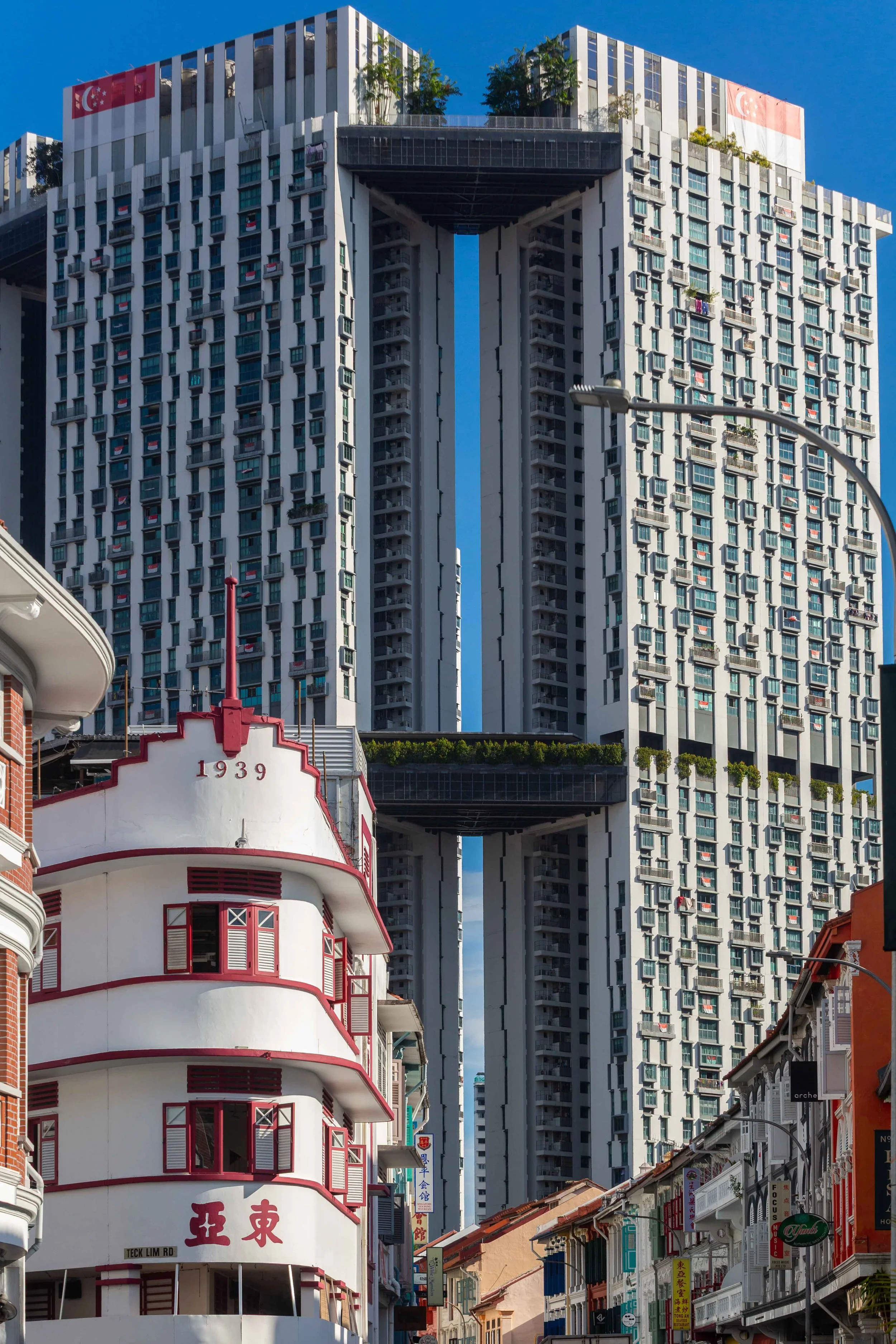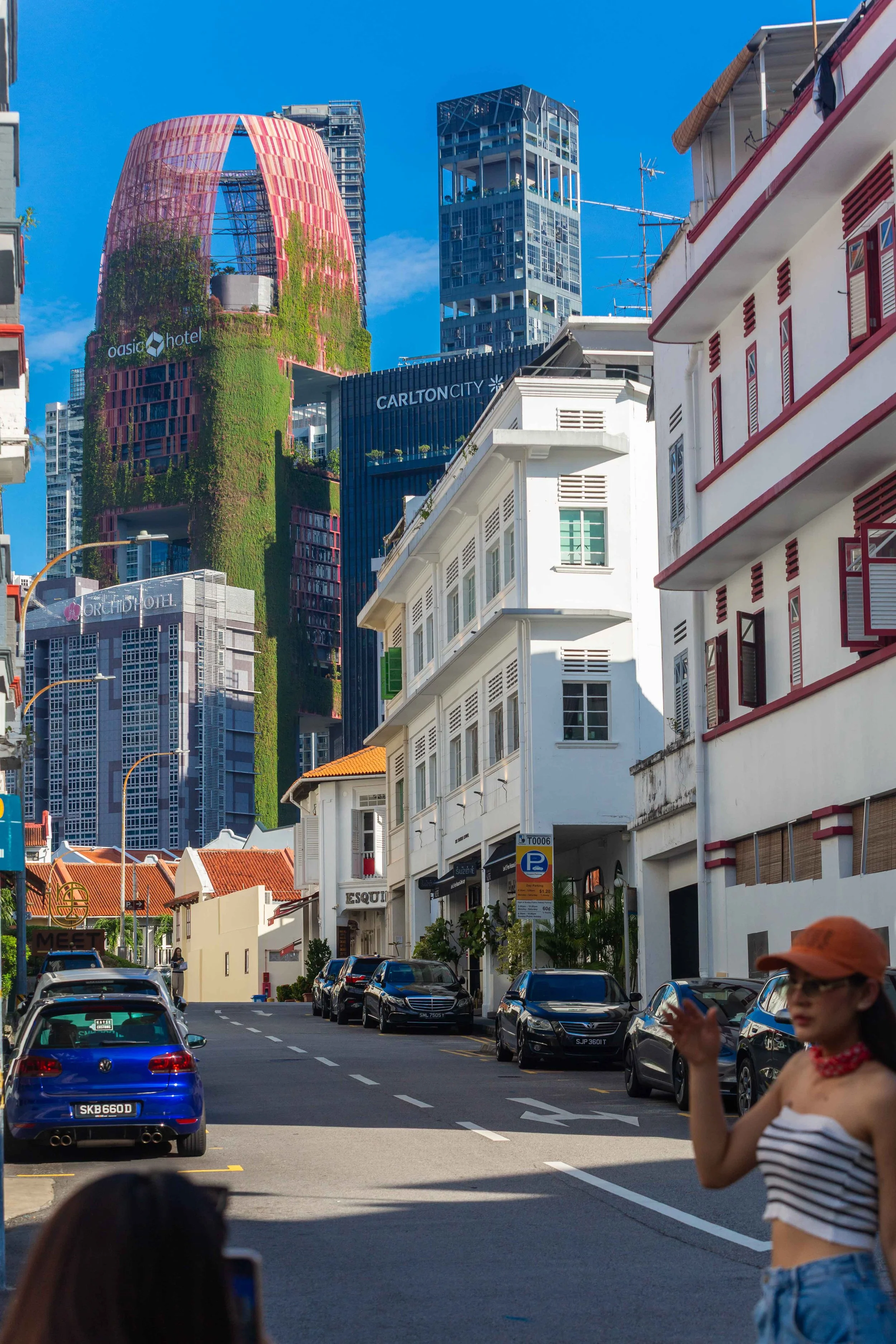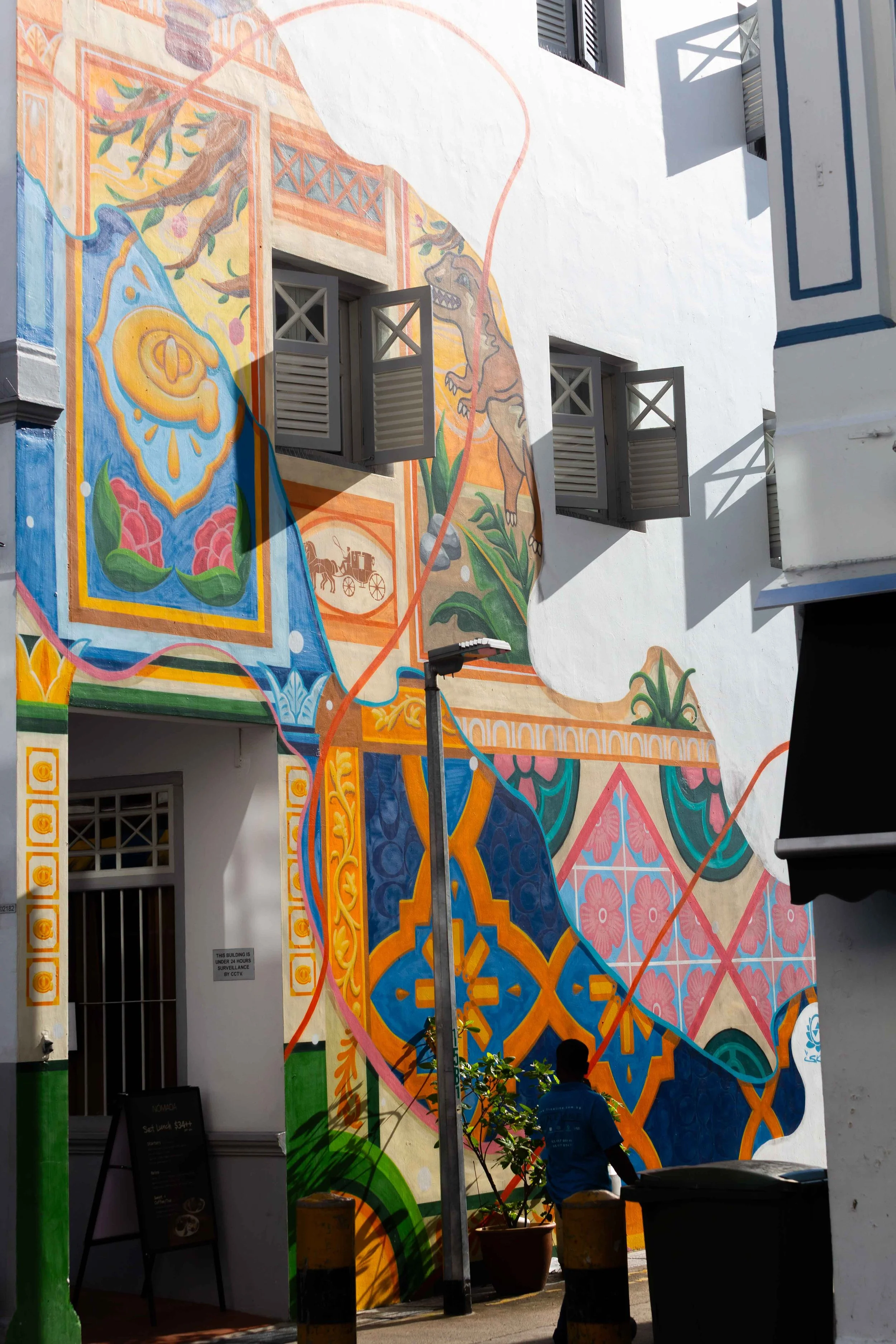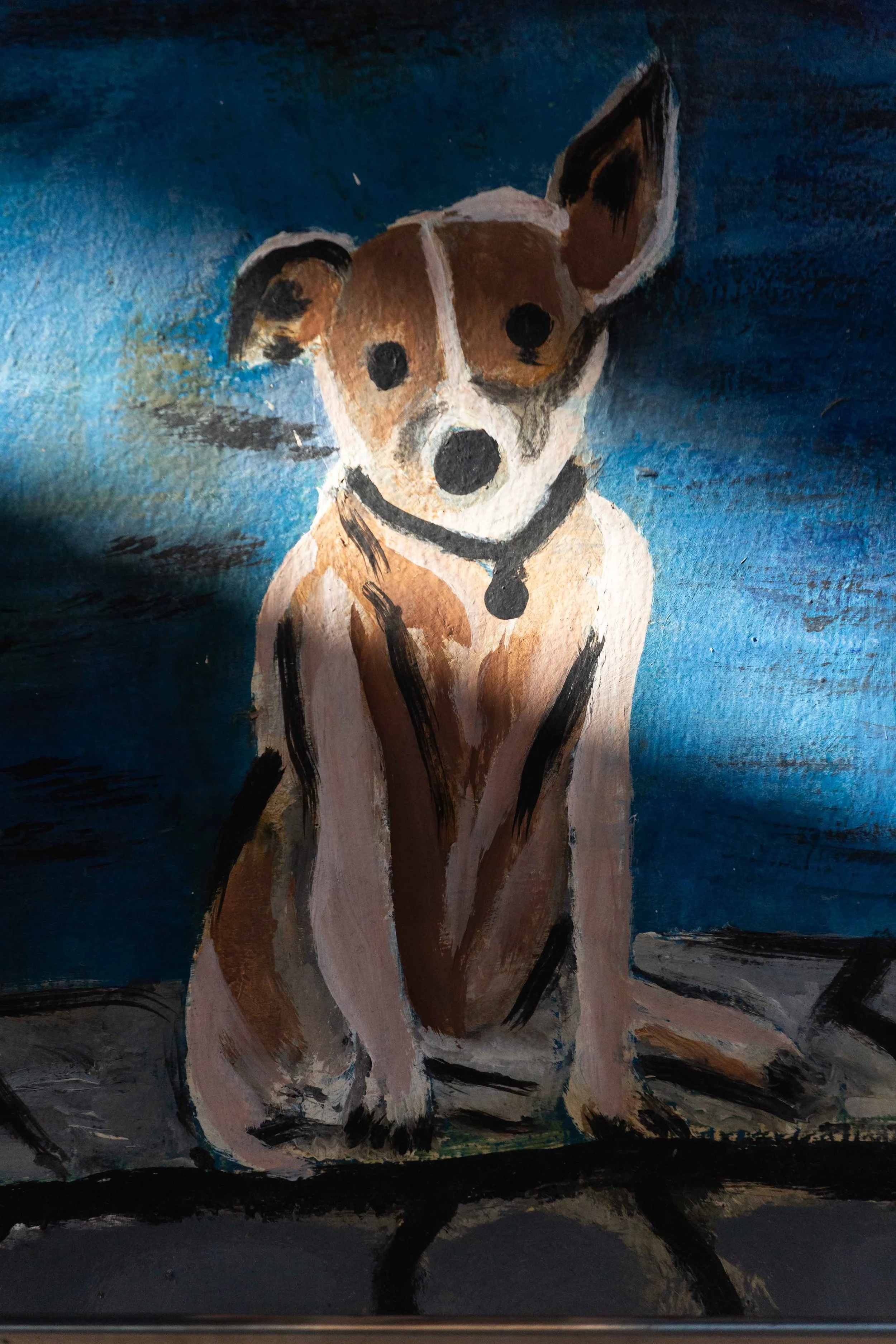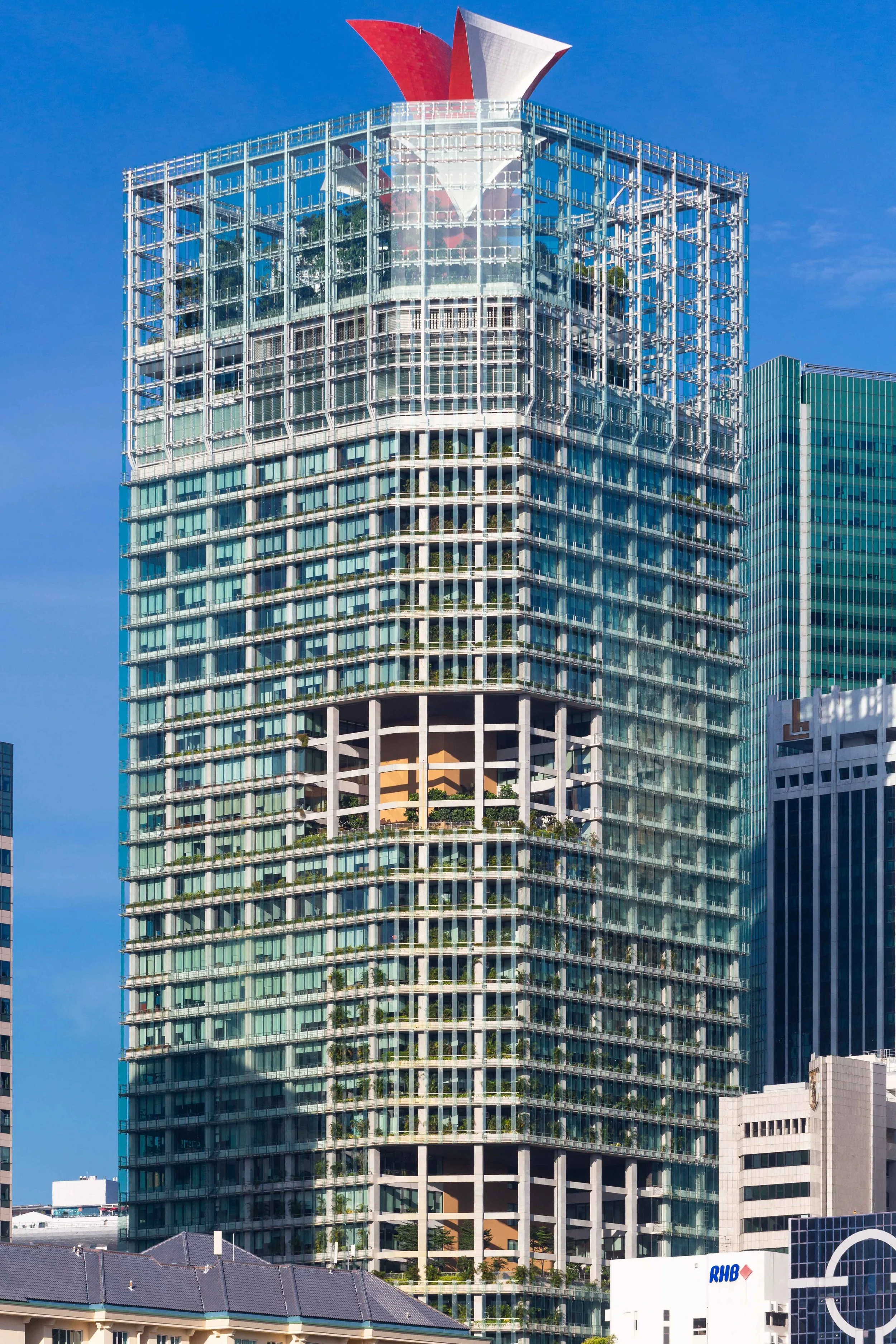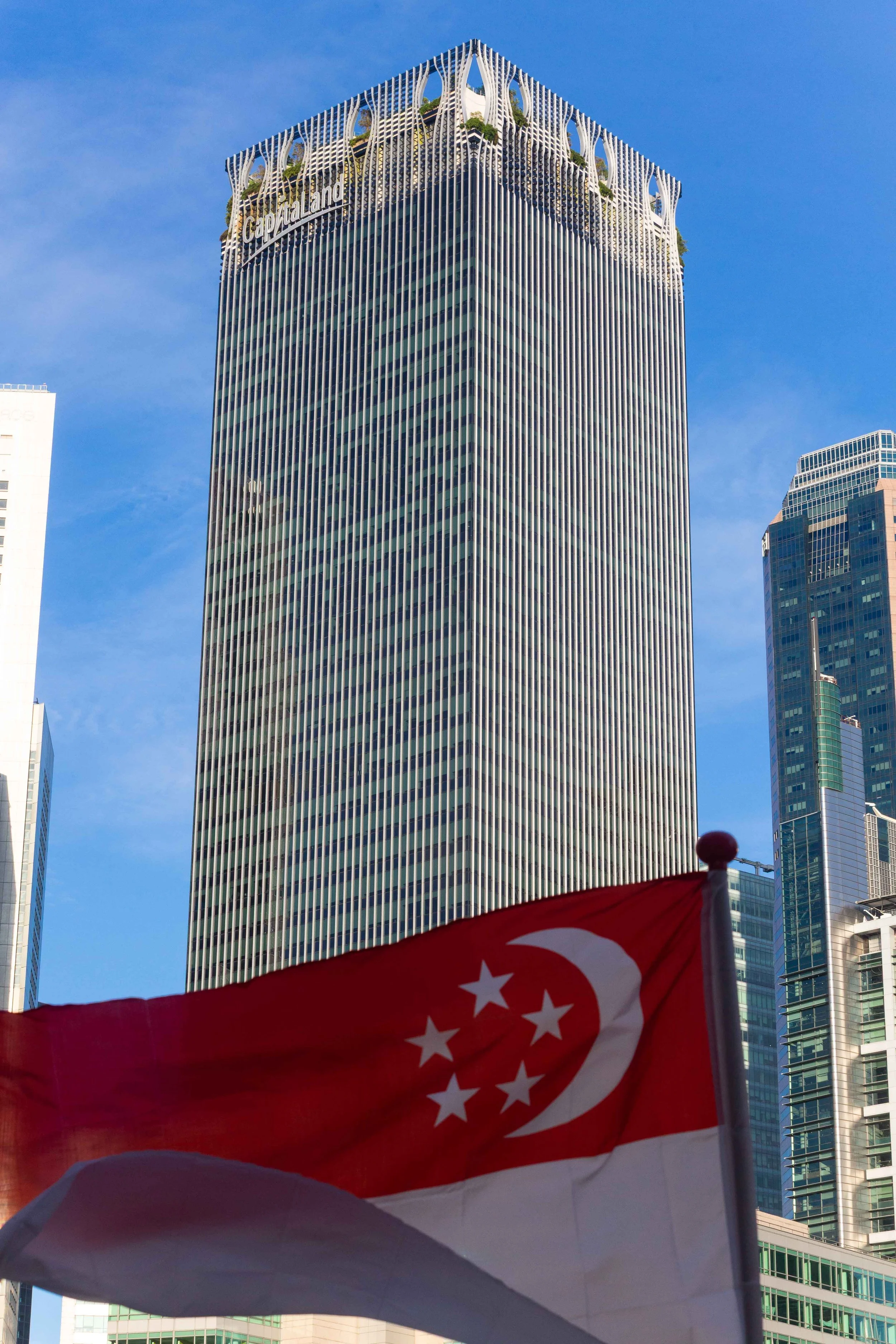Exploring Chinatown Through My 70-200mm Lens
RICKY GUI . 3.5 TO 4.5 MINUTES READING TIME
These vertical images were captured during one of my Chinatown walks. Let me share with you some of the scenes I observed and shot along the walk. But first check out the details of my Chinatown tour detail.
Chinatown Tour
If you register for my Chinatown Photography Private Tour, we’ll meet at Outram Park MRT Station, exit 4. Only selected days, there are two sessions to choose from:
Morning: 9:00 AM – 12:30 PM
Evening: 5:00 PM – 8:30 PM
Why these two timings
These timings are carefully chosen. The morning session offers a calm, unhurried start to the day, and surroundings are beginning to unfold. While the evening walk allows photographers to witness and capture the transition from day to night—a unique experience depending on your schedule in Singapore.
I would like to suggest meeting 5–10 minutes earlier. This gives us a bit of time to chat and for me to understand your photography interests: What do you enjoy shooting? What do you hope to improve? By knowing your needs, I can adjust the walk and guidance accordingly. With me leading the way, there’s no need to worry about navigating unfamiliar streets—you can focus fully on your photography experience.
1.
2.
What lenses to bring
I always recommend to bring the lenses you most enjoy using, but for this walk I highly recommend a setup that covers at least 24mm wide-angle to 200mm telephoto. This range gives you flexibility:
Wide-angle (24–35mm) for architecture, alleys, and context shots.
Mid-range (50–85mm) for candid portraits and street scenes.
Telephoto (70–200mm) for compressing perspective and isolating details. In fact this is my favourite set-up most of the time.
If possible, travel light. A lighter load goes a long way in keeping you mobile and less distracted.
I believe many tourists like to have their own photos taken during the tour. I’m more than happy to use your camera to capture portraits of you against the backdrops we explore. It’s a great way to have your journey documented for Instagram, whatever social media platforms or personal memories. If you post, feel free to tag #capSGtour.
3.
4.
Scenes from the Walk
1. Tong Ah Building, Keong Saik Road
Just five minutes from our meeting point stands the iconic Tong Ah Building, prominently located at the junction of Keong Saik Road and Teck Lim Road. Its distinctive red-and-white façade and sharp triangular shape once made it a must-shoot Instagram hotspot. Although the buzz has faded in recent years, I still often see visitors stopping to photograph it.
In the background rises Pinnacle@Duxton, a striking 50-storey public housing development in Singapore’s city centre. The juxtaposition of the historic shophouse against this modern vertical landmark is a reminder of how Singapore’s urban fabric blends heritage with contemporary living.
2. Tourists at Teck Lim Road
I couldn’t resist capturing a candid of two Thai tourists who spent nearly ten minutes posing in front of the building. From across the street, I spotted three modern high-rise hotels towering behind them. By stepping back and framing at 81mm focal length, I was able to compress the scene—layering the tourists, shophouse heritage, and modern hotels into a single frame.
3. Mural in the Alley
Down a narrow alley stood a mural that was tricky to photograph. With only my 70–200mm lens, I had to step back significantly to capture the entire artwork. Later, while reviewing the shot on my computer, I noticed a discreet Coach logo embedded in the mural—suggesting it may have been a commissioned piece. Do check out mural in Chinatown blog.
4. Mural of a Dog on Kreta Ayer Road
On Kreta Ayer Road, I came across a mural of a dog just as the light sliced across the wall. The illumination was fleeting but powerful. For me, it was a decisive moment, a reminder that in street photography, light itself often becomes the main subject.
5. Architectural Perspective of CapitalGreen
From a distance, I used a 145mm focal length to compress the lines and forms of CapitalGreen. Telephoto perspectives like this flatten the structure in a way that emphasizes geometry over scale.
6.CapitaSpring
From a higher vantage point, I framed CapitaSpring, soaring at 280 meters into the city’s skyline. The inclusion of Singapore’s flag in the lower part of the frame adds both scale and symbolism—contrasting national identity against modern architecture.
For me, Chinatown is like my own backyard—I’ve been walking these streets for as long as I can remember. There’s an old saying: “The best picture is often taken in your own backyard.” Singapore’s landscape is constantly evolving, and each walk reveals something new. The mix of heritage and cosmopolitan development reflects decades of planning and execution that have shaped today’s landmarks.
5.
Final Thoughts
Every photography walk is an opportunity to see Chinatown with fresh eyes. Whether it’s capturing murals tucked into alleys, the fleeting interplay of light and shadow, or the juxtaposition of heritage and modernity, this precinct offers endless learning experiences for photographers of all levels.
6.

